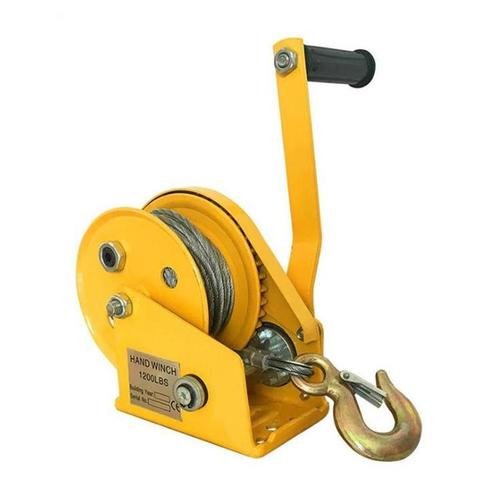In recent years, the production and research of hand-operated winches have undergone significant improvements. With advances in manufacturing and engineering, today’s hand winches are no longer simple lifting devices—they are becoming more user-friendly, technologically advanced, and scientifically designed. As a result, their application has expanded beyond traditional industries.
Hand winches are now widely used in coal mining, chemical plants, construction sites, ports, and livestock farms, while also finding a place in everyday household lifting tasks. Whether for hoisting equipment in a factory, moving heavy loads on a farm, or carrying out small-scale lifting work at home, the modern hand winch is proving to be both practical and reliable.

The Safety Innovation: Forward-Reverse Clamping Plate
One of the most noteworthy innovations in the design of hand winches is the forward-reverse clamping plate. This small but crucial component dramatically improves the safety and stability of the winch during operation.
The clamping plate is located at the center of the winch. To its left sits the rotating gear, to its right the hand crank, and beneath it the winch’s base. Shaped somewhat like a pair of pliers, the clamping plate is engineered to lock firmly onto the gear.
So how does it work?
The forward-reverse clamping plate functions as a self-locking mechanism, essentially acting as the braking system of the winch. When the steel cable is under load—such as when pulling a vehicle or hoisting heavy equipment—and the winch suddenly stops, the clamping plate automatically engages. It locks the gear into place, preventing backward rotation. This means the winch can continue to move forward but cannot reverse unintentionally, ensuring maximum safety for both the operator and the load.
Why This Matters
For industries where safety is non-negotiable, this feature is a game-changer. In mining, construction, or chemical environments, even a minor slip could lead to severe accidents. The self-locking function ensures that loads remain secure, even in the event of sudden stops or unexpected movements.
For household users, it provides peace of mind. Lifting furniture, construction materials, or other heavy objects around the home becomes far safer, reducing the risk of accidents caused by slipping cables or uncontrolled gear movement.
As demand grows across multiple industries and domestic applications, manufacturers are expected to continue improving the design, material strength, and operational safety of hand winches. Future models may integrate ergonomic handles, lightweight yet durable materials, and even smart sensors to further enhance performance.
What was once seen as a purely industrial tool is quickly becoming a versatile solution for both professional and personal use. Thanks to innovations like the forward-reverse clamping plate, the modern hand winch is set to remain a trusted companion wherever secure and efficient lifting is required.
